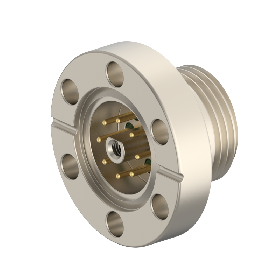Cermet is a heterogeneous composite material composed of metal or alloy and ceramic. Metals and ceramics have their own advantages. Generally, metals and their alloys have good stability and ductility, but they are easy to oxidize and creep at high temperatures. Ceramics are brittle and have poor thermal stability, but have high refractoriness and strong corrosion resistance. Cermet is the combination of the two into a whole, which has the advantages of high strength, high hardness, corrosion resistance, wear resistance, high temperature resistance and small expansion coefficient.
The ceramic phase in cermets is usually composed of advanced refractory oxides and refractory compounds. The raw material of the metal phase is pure metal powder. For example: tungsten, molybdenum, titanium, chromium, nickel, cobalt, iron, etc. and their alloys.
The main processes of cermet manufacturing are: powder preparation, blank mixing molding and sintering.
Changing the metal content of the cermet can change the performance of the cermet. For example, if the volume fraction of metal is less than 0.067 and the oxide (Al2O3) particles are finer, an insulator can be made; if the volume fraction of metal is greater than 0.067, the oxide (Al2O3) particles can be made into a conductor if the oxide (Al2O3) particles are coarser. It is also possible to change the composition of the cermet and the particle size of the raw material to make different parts of the same product have different electrical conductivity. Changing the content of metal in the ceramic can also change the thermal expansion coefficient; products with a gradient in expansion coefficient can be made as required to meet the requirements of sealing and matching.
The use of different thermal expansion coefficients in different parts of cermet can be used for sealing between different materials.
Cermets can also be used inside microwave devices as high-resistance materials for power attenuation. At present, “tungsten-based” metal attenuating ceramics with tungsten content of 5% are more commonly used. In addition, titanate-based cermets have also been used.
(huiputech)

Z-S-CF16-0810S,Z-S-CF16-0810M,Z-S-CF16-0810L
2025-11-04
Contact : Martin
Tel : +86 18588203671
Mobile : +86 18588203671
Fax : +86 18588203671
Email : Martin@huiputech.com
Address : 3/F, Building F, GLORY Technology Park, No.2 Baolong 5th Road, Longgang District, Shenzhen, Guangdong, China.